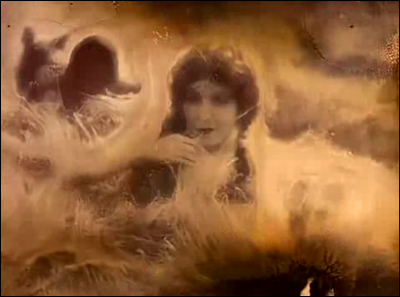Bill Morrison’s short symphony of decaying celluloid is both one of the worst and best films of 2002. By worst we mean the medium’s fragile physicality, as Morrison created Decasia with archival clips from the nitrate-stock, silent-film era that were most damaged and decomposed. By best we mean the drama he’s created: Instead of characters in opposition within some story, we have the very medium of film in opposition to narrative. These black-and-white snippets of story, some a century old, are disappearing right before our eyes—even as we try to make sense of whirling dervishes, dancing women, camel caravans, boxing pugilists, parachuting troops, and praying nuns. Scored by Michael Gordon in Glassian-atonal style, Decasia is a profoundly beautiful film for those who don’t mind an image lapsing into complete mottled, bubbled, blotchy abstraction. It surges and subsides from the nickelodeon to Stan Brakhage and back. The tension, which the score reflects, is how that erosional cycle becomes an analogue to both seeing and filming. Photons of light striking the retina—or a silver-halide film strip—are fundamentally impermanent; they decay and subside. Film, too, is evanescent. Just as nitrate was replaced by less flammable “safety film” in the ’50s, the movies are going digital. To watch Decasia is to watch time, to see entropy in effect. From the early blossoming of cinema to its final senescence, each rotting frame of Decasia looks like a glorious flower. (NR) BRIAN MILLER
Sept. 7-12, 9 p.m., 2012




